Contrary to assurances, rupee slumps to record low
Currency traded at Rs119.84 at close in the inter-bank market, down 3.65%
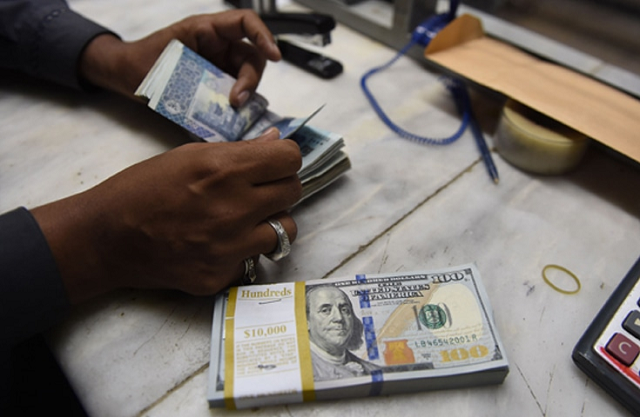
Some currency dealers temporarily suspended dollar buying and selling during the day after the rupee slumped in the inter-bank market.
PHOTO: AFP
On the previous working day on Thursday, the rupee had stood at Rs115.61 in inter-bank trade where commercial banks usually buy and sell large volumes of foreign currencies, mostly US dollars, on behalf of commercial importers.
In a statement, the central bank elaborated that the downward adjustment in the rupee reflected mounting pressure on the country’s foreign currency reserves, which had shrunk to a critical level of around two months of import cover at $10.04 billion on June 1, 2018.
“The market-based adjustment is reflective of the country’s external balance of payments position which is under pressure due to a large trade deficit,” the statement read.
Despite a 13.3% increase in exports in the first 10 months of current fiscal year (July-April FY18) and uptick in workers’ remittances, “growing imports have pushed the current account deficit to $14 billion in first 10 months of FY18, which is 1.5 times the level of deficit recorded in the same period of last year,” it added.
Before closing at the historic low, the rupee dropped to an all-time intra-day low of Rs121.50 to the US dollar. “This movement is based on foreign exchange demand-supply gap in the inter-bank market,” the SBP added.
It was of the view that the market-driven adjustment in the exchange rate along with other recent policy measures were expected to contain imbalance in the external account, thereby containing aggregate demand, and also facilitate prospects for generating non-debt creating inflows.
Rupee weakens to over Rs119 against dollar in open market as panic buying continues
“The SBP will continue to closely monitor foreign exchange markets and stands ready to ensure stability in financial markets and curb the emergence of speculative pressures,” it said.
SBP spokesperson Abid Qamar told The Express Tribune that “this is a free market where market forces determine the rupee’s value.”
However, in the past, the central bank has played a key role in determining the rupee-dollar exchange rate as it usually intervenes to keep the local currency stable.
The depreciation comes in stark contrast with an earlier statement of SBP Governor Tariq Bajwa who said the rupee was trading near its true equilibrium.
Former finance minister Miftah Ismail had also ruled out the possibility of another rupee depreciation after exports started increasing.
This was the third round of rupee depreciation since December 2017. In the first two rounds, it had shed 9.5% (5% in December 2017 and 4.5% in March 2018).
Rupee loses ground in open market, SBP calls ‘emergency’ meeting
In May 2018, Moody’s Investors Service - one of the top three global credit rating agencies - forecast that Pakistan’s rupee could shed value by another 7.75% and its worth may go as low as Rs125 to the dollar by June next year.
Besides, the International Monetary Fund (IMF) and independent experts have also found the rupee’s equilibrium near Rs125 to the US dollar.
Currency weakens further to Rs121 against dollar in intra-day trading
Open market runs parallel
Following sharp movement in the inter-bank market, the rupee closed at Rs120.50 to the US dollar in the open market, a currency dealer said.
Pakistan Forex Association reported that the local currency hit an intra-day low of Rs121.50 in the open market.
Some currency dealers temporarily suspended dollar buying and selling during the day after the rupee slumped in the inter-bank market.
Eurobonds
Reuters news agency reported in the afternoon that Pakistan’s Eurobonds fell on Monday following the country’s third currency depreciation in seven months.
The 2027-maturing bond fell 0.75 cent to trade at 89.76 cents - the first time the bond had slipped below the 90-cent mark. A 2025 bond fell 0.61 cent to its lowest level since February 2016.
Pakistan’s economy is forecast to expand by close to 6% in the current fiscal year which would be the fastest pace in more than a decade.
Published in The Express Tribune, June 12th, 2018.
Like Business on Facebook, follow @TribuneBiz on Twitter to stay informed and join in the conversation.




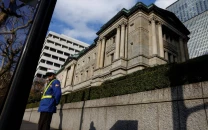
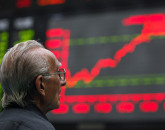



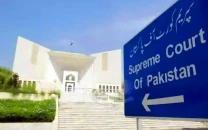

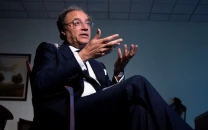
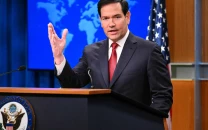






COMMENTS
Comments are moderated and generally will be posted if they are on-topic and not abusive.
For more information, please see our Comments FAQ